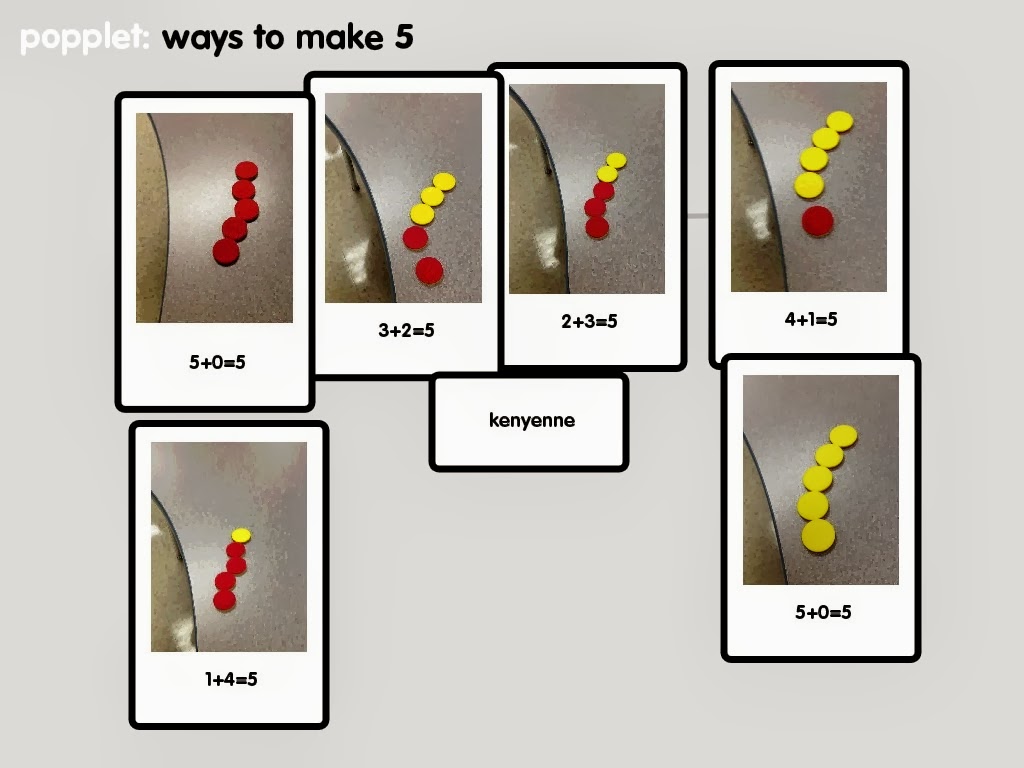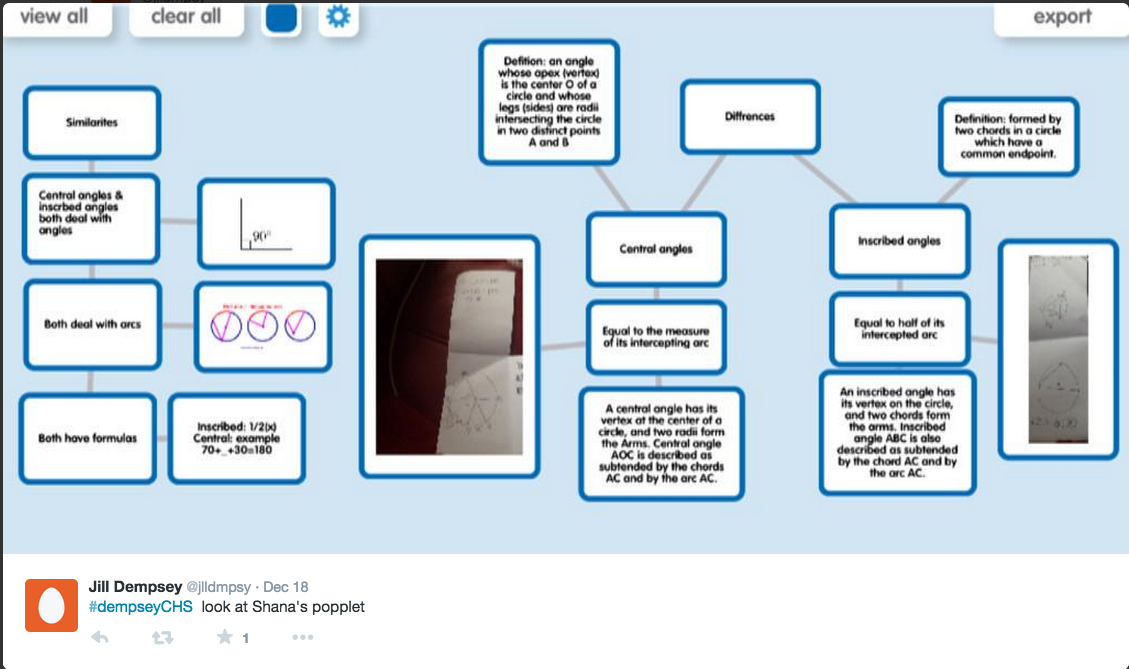Like any other subject, math has its gifted students who thrive on any problem their teacher sets, but in the main, kids find math difficult – so much so, they often start to question it’s usefulness quite early in their academic careers. This can also carry over into the teacher’s experience, with math being one of the subjects causing the greatest anxiety for teachers planning lessons and seeking to engage classrooms in math challenges.
As digital technology is introduced into more schools, apps like Popplet are reinvigorating the math classroom from an early age, so that it is not quite the dreaded place it once was for many.
Ways To Make 5
In Miss Smith’s 1st grade math class, students use Popplet and their iPad cameras to learn addition.
- First, the students selected numbers between 5 and 10
- Then, using dots of 2 different colors (red and yellow here) students produced the different ways their chosen number could be visualized
- Next they used their iPad cameras to photograph the different solutions
- Finally, the images were then uploaded to Popplet and equations that matched the dots were added as text.
This activity — which also lets kids practice with multiple technologies — can easily be adapted to other mathematical functions such as subtraction. The children can then rely on the Popplets that they themselves have created when solving similar math problems in the classroom or at home.
Learn to Count With Popplet
When Miss Pana teaches her 4-5 year olds at ISS international school in Singapore to learn to count, she gets them to create number lines using Popplet:
- First, students create separate popples for each number e.g. 1 – 5,
- Next they connect the numbers in sequence,
- Then the children create a corresponding popple for each number popple,
- Finally they draw objects/shapes – lines, circles, love hearts – in each popple, to match the numbers and connect them to the corresponding number popple.
The activity caters for different levels by having some children start with higher numbers. Children can then use their very own creations to revise counting.
Who Ate All The Pie? or Fair Share
Learning to share is a first step on the road to a satisfying adulthood. But we all know that some children –- and a great many adults! — find the gradient of this particular learning curve can be just a little too much to handle. A serious business indeed! Knowing how much and how little to share is an essential life skill. In math, students learn about this through the language of fractions.
In her Love of Learning Blog, seasoned educator Kirsty Grande tackles the problem by using Popplet in this “Proper and Improper Fractions” presentation:
Kirsty uses colors to distinguish between Proper and Improper fractions and provides equations which can be added as text, imported from other applications or written and uploaded as photos. Text popples clearly define rules. Fun, informative videos are uploaded to Popplet to further clarify and provide focus.
Now there is no longer any excuse for taking more than your fair share!
Think of a Number – Brainstorming Mathematical Concepts With Popplet
Primary ICT teacher, Nicole Barnes recently had her math students use Popplet in a brainstorming activity which not only demonstrates the mathematical concept of Place Value but connects that concept to the very real practical problem of buying a house. (“Place Value” – Get it?)
Students were asked to select a six-figure number and create popples to represent it in different ways:
- As the answer in a story
- Write the number
- Write the number as an expanded form
- Write the number as the answer to addition/subtraction problems
- Show the number as a diagram.
This activity can be adapted to include bigger or smaller numbers as well as fractions and decimals. Really, whatever students think of, can be added to the conversation.
Creating a Math Word Wall in Popplet for Test Preparation
Staff and students at Bronx Green Middle School created an iPad integration blog to assist with the integration of iPads into the clasroom. When Math Coach, Jeff Hammer suggested his students build a Math Wall as a way of revising for an exam, initially “unenthusiastic”, students were won over when they started using Popplet as it “allowed them to represent their ideas and definitions using pictures and illustrations that they drew, rather than just copying from a book”.
Beyond Elementary: Geometry Popplets
Popplet’s use is not confined to elementary level. It can lay the groundwork for perceiving math as fun, creative and enjoyable that extends all through a student’s learning path as this geometry example demonstrates.
In geometry, we often use words to describe shapes and angles but really it all starts to make a lot more sense if we can quite simply look at a picture. Popplet encourages the use of visual representations: diagrams, text and research can be brought together quickly and clearly to better explain concepts in geometry. This is well illustrated in the following Popplet from Shana which describes and contrasts “central and inscribed angles”:
Shana’s Popplet is a clear and concise source of information that is useful to summarize a project, to aid in revision, and to reinforce math skills. Shana has even used Popplet’s organizing tools to elegantly align her work, which looks great! Top marks.
By using Popplet early in student’s learning careers, a wholly new experience of what math is like for many students is being forged. Students and teachers are solving math problems together, math is more easily being recognized as a creative subject, and digital technology is being harnessed to make intangible math challenges more practical and recognizable.
What are you and your students doing with Popplet in the math classroom? Share your experiences with us, and our community on Twitter and on our Facebook page.



